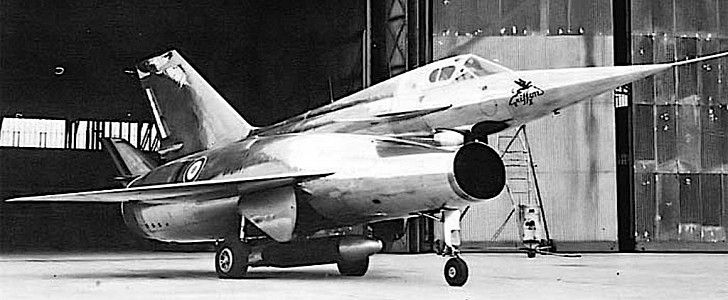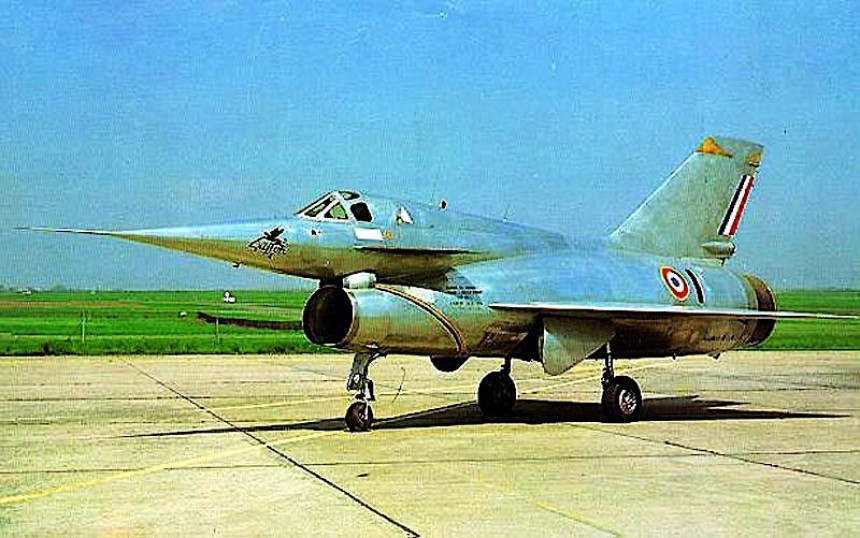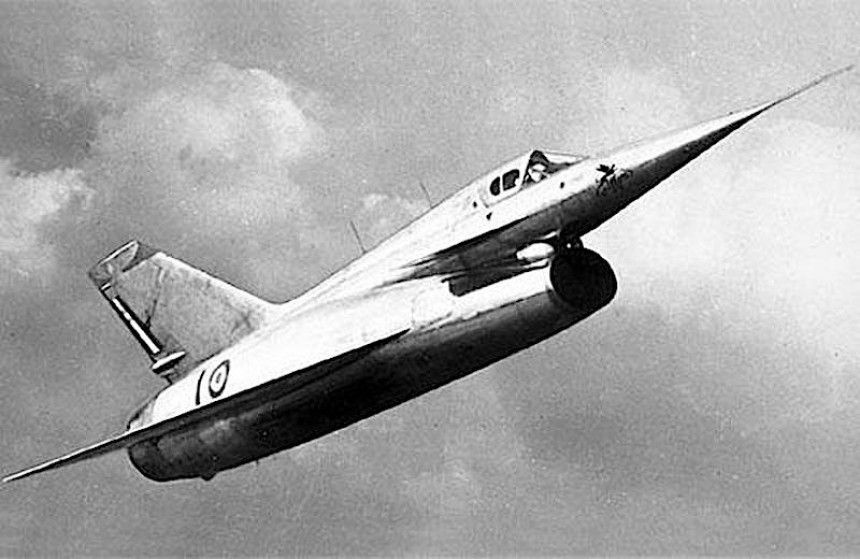Over the years, as it sought to give humans the unnatural ability to fly, for whatever purpose, the aviation industry gave birth to some crazy aircraft concepts. And by crazy, we meant both from a technology standpoint, but also design-wise.
Not long ago, we’ve made a brief incursion into Swedish air space, where we found the 35 Draken, a Saab-made machine that back in the 1950s took the notion of delta wing to a whole new, and relatively successful level. This Sunday, we’ll move over to France, the home base of Airbus, but also the place where the focus of this piece, the Nord 1500 Griffon, was born and died.
After the years of the Second World War, the French were hard at work rebuilding their state. That included giving birth to new companies and industries to support and accelerate the process.
The so-called Nord-Aviation was one of these post-War companies. Owned by the French state, it was born in 1954, and set out to design and manufacture airplanes and missiles. In the 16 or so years it was on the market, Nord was responsible for making flying machines like the Pingouin (a re-engineered Messerschmitt Bf 108), the Norécrin four-seater, or the 1400 Noroit flying boat.
Given how the company was born at the height of the jet age, it of course tried its hand in making sound speed-capable aircraft as well. And their most prominent machine (aid failure), is the 1500 Griffon.
The idea of the Griffon was born out of the need of the French to have in their arsenal something really fast and capable. It also had to have delta wings, because they were all the craze back then.
The Griffon, an evolution of the earlier Gerfaut research airplane, was to be a peculiar contraption even at that time, as it was supposed to use dual-propulsion, meaning both a turbojet and a ramjet, to get itself going. This combination would have allowed it to both conduct unassisted takeoffs, but also generate additional thrust in its quest to reach Mach 2 (1,535 mph/2,470 kph).
Back in 1955, the first prototype of the Griffon made its maiden flight. It had only the turbojet engine on, as this flight was supposed to validate the thing’s systems and aerodynamic properties. Even so, it reached a top speed of Mach 1.3, convincing the French they’re on to something.
Four years later, Griffon II took to the sky. This one was equipped with engines that combined the power from an Atar turbojet with that from a Nord ramjet. This configuration allowed it to reach a top speed of Mach 2.19, while flying at an altitude of 50,000 feet (15,240 meters) in 1959.
Fitting such a technology did cause its design to shift dramatically from what peope usually associated with the notion of an airplane. Because of the size of the ramjet (over 4 feet/1.5 meters in diameter), the airplane had to be gifted with a longer and wider aft fuselage, but also with a larger air intake. These changes made the Griffon look, at least when viewed from certain angles, as if is was carrying a baby in its belly.
The airplane had room for just one pilot, despite its size. It was over 14.54 meters long (47 feet), had a wingspan of over 8 meters (26 feet), and the maximum takeoff weight was 6,745 kg (14,870 lbs).
Despite the intriguing design ideas and money poured into it, the airplane was not without issues. The absence of suitable materials meant its airframe had a tendency to overheat, the exhaust from the ramjet caused problems with the tailpipe, and it was overall hard to fly, given how there was no adjustment to the ramjet other than having it turned on and off.
That means it was only a matter of time before the French lost interest in the place, and that’s exactly what happened. That means the Mach 3-capable Griffon III never came to be, and the moniker never made it into production.
As it stands, the world is left with just the two prototypes made and flown on several occasions, so we have no idea how this design would have behaved in combat.
After the years of the Second World War, the French were hard at work rebuilding their state. That included giving birth to new companies and industries to support and accelerate the process.
The so-called Nord-Aviation was one of these post-War companies. Owned by the French state, it was born in 1954, and set out to design and manufacture airplanes and missiles. In the 16 or so years it was on the market, Nord was responsible for making flying machines like the Pingouin (a re-engineered Messerschmitt Bf 108), the Norécrin four-seater, or the 1400 Noroit flying boat.
Given how the company was born at the height of the jet age, it of course tried its hand in making sound speed-capable aircraft as well. And their most prominent machine (aid failure), is the 1500 Griffon.
The Griffon, an evolution of the earlier Gerfaut research airplane, was to be a peculiar contraption even at that time, as it was supposed to use dual-propulsion, meaning both a turbojet and a ramjet, to get itself going. This combination would have allowed it to both conduct unassisted takeoffs, but also generate additional thrust in its quest to reach Mach 2 (1,535 mph/2,470 kph).
Back in 1955, the first prototype of the Griffon made its maiden flight. It had only the turbojet engine on, as this flight was supposed to validate the thing’s systems and aerodynamic properties. Even so, it reached a top speed of Mach 1.3, convincing the French they’re on to something.
Four years later, Griffon II took to the sky. This one was equipped with engines that combined the power from an Atar turbojet with that from a Nord ramjet. This configuration allowed it to reach a top speed of Mach 2.19, while flying at an altitude of 50,000 feet (15,240 meters) in 1959.
The airplane had room for just one pilot, despite its size. It was over 14.54 meters long (47 feet), had a wingspan of over 8 meters (26 feet), and the maximum takeoff weight was 6,745 kg (14,870 lbs).
Despite the intriguing design ideas and money poured into it, the airplane was not without issues. The absence of suitable materials meant its airframe had a tendency to overheat, the exhaust from the ramjet caused problems with the tailpipe, and it was overall hard to fly, given how there was no adjustment to the ramjet other than having it turned on and off.
That means it was only a matter of time before the French lost interest in the place, and that’s exactly what happened. That means the Mach 3-capable Griffon III never came to be, and the moniker never made it into production.
As it stands, the world is left with just the two prototypes made and flown on several occasions, so we have no idea how this design would have behaved in combat.












